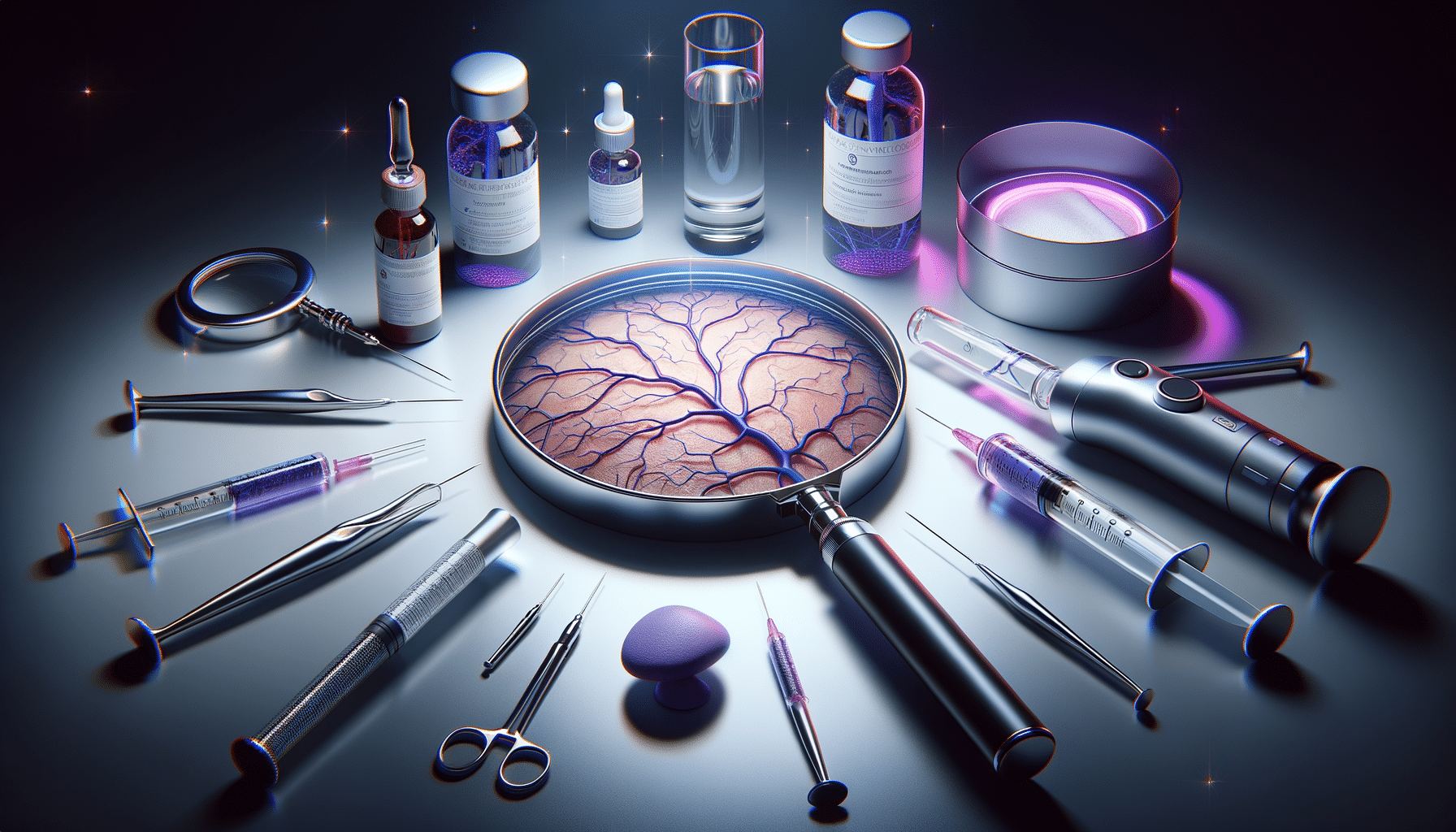
Treating Spider Veins: Options and Insights
Understanding Spider Veins: Causes and Symptoms
Spider veins, medically known as telangiectasias, are small, dilated blood vessels visible near the surface of the skin. They often appear as red, blue, or purple lines and are commonly found on the legs and face. These veins are named for their web-like appearance, reminiscent of a spider’s web. While they are usually harmless, they can be a cosmetic concern for many people.
Several factors contribute to the development of spider veins. Genetics play a significant role, with a family history of vein problems increasing the likelihood of developing them. Hormonal changes, particularly during pregnancy or menopause, can also lead to their appearance. Additionally, prolonged standing or sitting, obesity, and sun exposure are known risk factors.
Symptoms of spider veins can vary. While they are often painless, some individuals may experience discomfort, including itching or burning sensations. In rare cases, spider veins can be a sign of more serious vein disease, necessitating medical evaluation. Understanding the causes and symptoms is the first step in managing and treating spider veins effectively.
Non-Invasive Treatments for Spider Veins
For those seeking to address spider veins without surgery, several non-invasive treatment options are available. These methods focus on reducing the appearance of veins and alleviating any associated discomfort.
Compression stockings are a common first-line treatment. These specially designed garments apply pressure to the legs, improving blood flow and reducing vein swelling. They are particularly beneficial for those who stand or sit for long periods.
Sclerotherapy is another popular treatment. This procedure involves injecting a solution directly into the affected veins, causing them to collapse and fade over time. It is minimally invasive and can be performed in a doctor’s office with little downtime.
Laser therapy is also an option. This technique uses focused light to target and destroy the spider veins, prompting the body to absorb them naturally. It is effective for treating veins on the face and smaller veins on the legs.
These non-invasive treatments offer a range of options for individuals looking to manage spider veins without undergoing surgery. Consulting with a healthcare provider can help determine the most suitable approach based on individual needs and vein characteristics.
Surgical Options for Severe Cases
In cases where spider veins are extensive or cause significant discomfort, surgical options may be considered. These procedures are typically reserved for severe cases that do not respond to non-invasive treatments.
Ambulatory phlebectomy is a surgical procedure that involves removing the affected veins through small incisions in the skin. This method is effective for larger veins and provides immediate results. Recovery time is relatively short, with most patients resuming normal activities within a few days.
Endovenous laser therapy (EVLT) is another surgical option. This technique uses laser energy delivered through a thin fiber inserted into the vein. The heat from the laser collapses the vein, which is then absorbed by the body. EVLT is less invasive than traditional surgery and offers a quicker recovery.
While surgical treatments can be effective, they come with risks and potential complications, such as infection or scarring. It is essential to discuss these options thoroughly with a healthcare provider to weigh the benefits and risks.
For those with severe spider veins, surgical treatments can provide significant relief and improve the appearance of the affected areas. However, they should be considered carefully and typically as a last resort.
Lifestyle Changes to Prevent Spider Veins
Preventing spider veins involves adopting lifestyle changes that promote healthy circulation and reduce pressure on the veins. These measures can help minimize the risk of developing new veins and manage existing ones.
Regular exercise is crucial for maintaining healthy blood flow. Activities like walking, swimming, and cycling are excellent choices, as they engage the leg muscles and encourage circulation. Additionally, maintaining a healthy weight can reduce pressure on the veins, particularly in the legs.
For those with jobs requiring prolonged standing or sitting, taking regular breaks to move around can prevent blood from pooling in the veins. Elevating the legs when resting can also help reduce pressure and swelling.
Wearing sunscreen is important for preventing spider veins on the face. Sun exposure can weaken the skin and veins, making them more visible. A broad-spectrum sunscreen can protect the skin and reduce the risk of vein damage.
Incorporating these lifestyle changes can significantly impact the prevention and management of spider veins. By promoting healthy habits, individuals can reduce their risk of developing new veins and manage existing ones more effectively.
Consulting a Healthcare Professional
While many treatments and preventive measures for spider veins can be undertaken at home, consulting a healthcare professional is essential for a comprehensive approach. A doctor can provide an accurate diagnosis and recommend the most appropriate treatment options based on individual needs.
During a consultation, a healthcare provider will evaluate the veins and assess any underlying conditions that may contribute to their development. This evaluation may include a physical examination and, in some cases, imaging tests to assess blood flow and vein health.
Healthcare professionals can also offer guidance on managing symptoms and preventing further vein issues. They can recommend specific treatments, such as sclerotherapy or laser therapy, and provide information on potential side effects and expected outcomes.
For individuals experiencing pain or discomfort from spider veins, seeking medical advice is particularly important. A healthcare provider can help determine if the veins are a sign of a more serious condition and recommend appropriate interventions.
Consulting a healthcare professional ensures that individuals receive personalized care and treatment for spider veins, addressing both cosmetic concerns and any underlying health issues.


